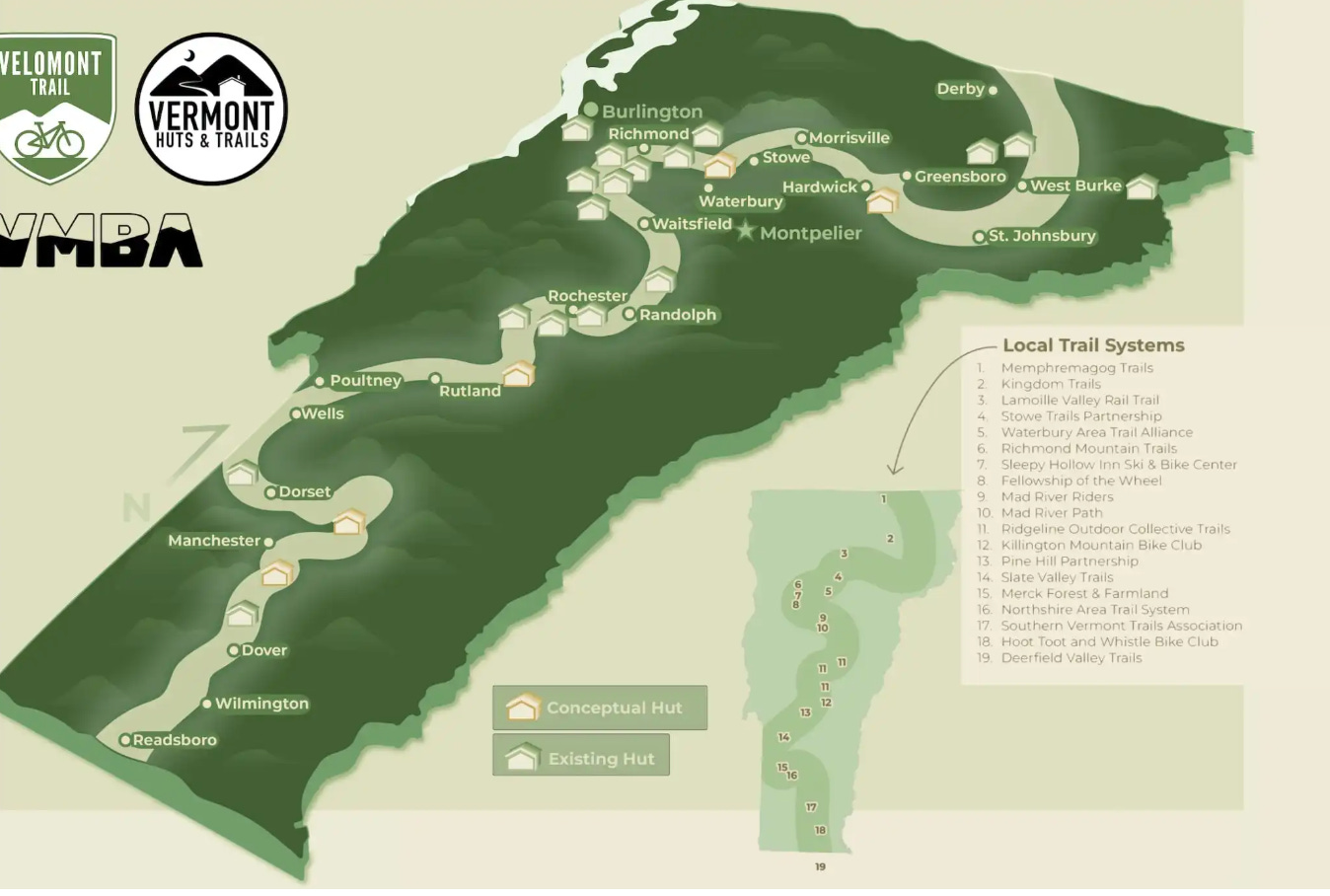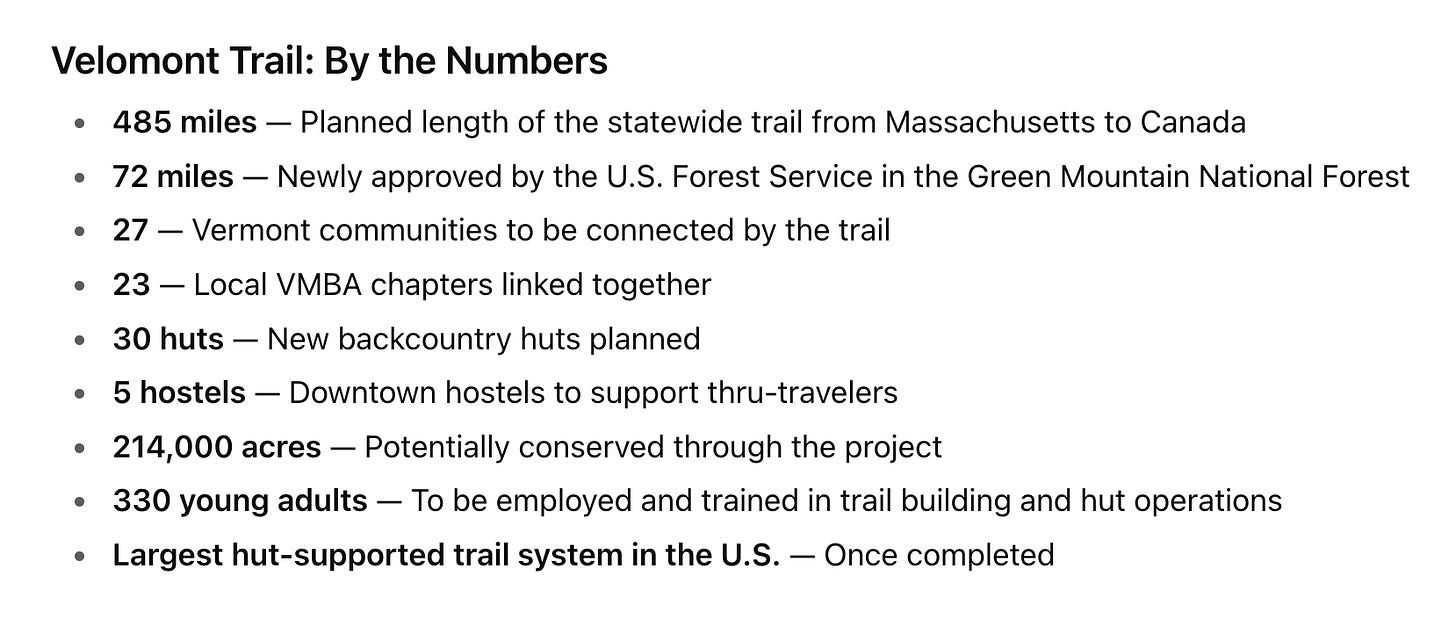U.S. Forest Service Approves 72-Miles For The Velomont Bike Trail in Vermont
Unlike a thru-hiking route, the Velomont is designed as a multi-use system with mountain biking as a central focus, weaving together public and private lands across the spine of the Green Mountains.
Vermont’s dream of a hut-to-hut trail stretching the length of the state just took a major step forward. The U.S. Forest Service has approved the designation of 72 miles of National Forest System roads and trails in the Manchester Ranger District as part of the Velomont Trail, a project designed to link communities, expand outdoor recreation, and protect some of the Green Mountain State’s most cherished landscapes.
A Trail That Spans Vermont
The Velomont Trail, a partnership between Vermont Huts & Trails (VHT) and the Vermont Mountain Bike Association (VMBA), is envisioned as a 485-mile corridor running from Massachusetts to Canada. Unlike a simple thru-hiking route, the Velomont is designed as a multi-use system with mountain biking as a central focus, weaving together public and private lands across the spine of the Green Mountains.
When complete, the trail will connect 27 communities and 23 VMBA chapters. Riders, hikers, and skiers will be able to travel from town to town and between backcountry huts, with 30 new cabins and five new downtown hostels planned along the way. Organizers say the trail will be adaptive-friendly wherever possible, ensuring access for a wide range of users.
What the Forest Service Approved
The newly approved 72-mile segment is not a single ribbon of fresh construction, but rather a mix of upgrades, relocations, and new builds. The goal is to make routes more sustainable while improving the outdoor experience. According to project organizers, this section will create new opportunities for mountain biking in areas where trail access has been limited and will open up fresh entry points for outdoor recreation in southern Vermont.
The designation is a milestone. It not only legitimizes the Velomont’s footprint inside the Green Mountain National Forest but also signals strong federal support for the vision of a statewide trail network.
More Than Recreation: Conservation and Economy
Backers of the Velomont emphasize that the project is as much about conservation and community development as it is about recreation. Organizers estimate the trail could help conserve up to 214,000 acres of currently unprotected land, tying recreation planning to broader land stewardship.
It’s also an economic play. Trail construction and hut building will employ and train more than 300 young adults, creating pathways to outdoor careers. Once complete, the Velomont is expected to drive tourism in rural towns that have often been bypassed, strengthening local economies with new lodging, dining, and guiding opportunities.
Vermont in a Regional Context
Vermont has long marketed itself as a four-season playground, but the Velomont would put the state on par with world-class trail networks. While New Hampshire’s White Mountains boast the Appalachian Mountain Club’s hut system, and Maine has the hut-to-hut Maine Huts & Trails network, Vermont’s project is unique in its integration of mountain biking with hiking, skiing, and multi-use access.
Supporters note that once completed, the Velomont will be the largest hut-supported trail network in the United States, with Vermont serving as the proving ground for a new model of recreation-based rural revitalization.
What’s Next?
Work is already underway on sections of the Velomont, with volunteers, trail crews, and local communities pitching in. The Forest Service approval now allows for construction and improvements within the Green Mountain National Forest to begin in earnest.
For many, the approval is more than a bureaucratic step — it’s validation of a big idea. A decade ago, the concept of biking or hiking from Massachusetts to Canada with overnight hut stays sounded aspirational. Today, with 72 miles newly approved inside the national forest, the Velomont Trail feels a lot closer to reality.




